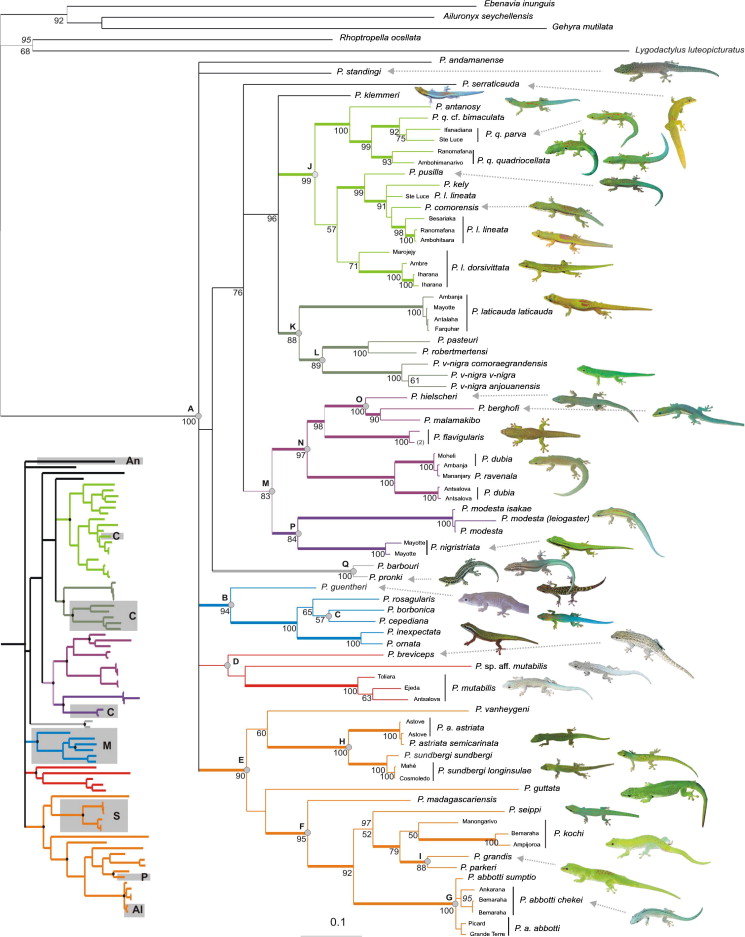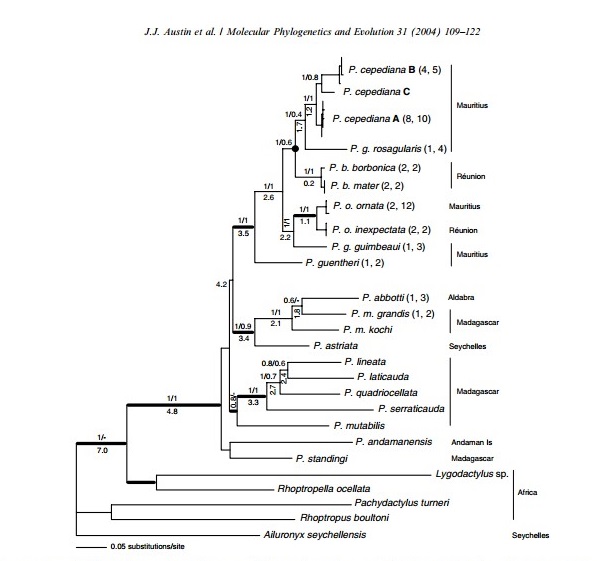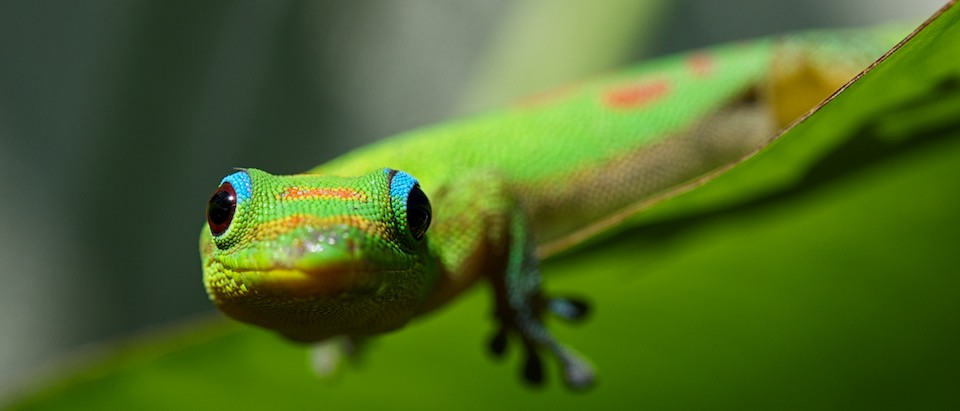Classification
Kingdom:
Animalia
The Gold Dust Day Gecko are all multicellular, eukaryotic
heterotrophs. Most animals reproduce sexually. These animals injest
their food and digest the contents internally in a cavity. The support
system is skeletal based, attaching with muscles at the tendons to
facilitate movement. Their circulatory system is closed, with a
four-chambered heart to pump blood throughout the body. Oxygen is
absorbed through the lungs, and integrated into the blood stream through
the alveoli sacs. The Phelsuma laticauda has bilateral
symmetry.
Phylum: Chordata
P. laticauda has a segmented body and muscles. They have a
notochord, which is a rod (typically known as the spinal cord) which
extends throughout most of the body. This provides support to the
organism during movement. The Gold Dust Day Gecko has three germ layers
and a coelom.
Class: Reptilia
This gecko produces eggs with an extra membrane to allow them to lay
their eggs on land. Phelsuma laticauda have scales and are
cold-blooded creatures.
Order:
Squamata
P. laticauda are able to move their quadrate bone in
the jaw allowing them to move their upper jaws (similarly to snakes).
Family: Gekkonidae
These lizards are typically found in tropical areas with a lot of
species diversity. A unique quality of the Gold Dust Day Gecko, like all
geckos, is a lack of eyelids. In its place are rounded pupils and a
clear plate covering the surface of their eyes, which can be cleaned
using their tongues.
Genus: Phelsuma
P. laticauda, similarly to the geckos in this genus are mainly
active during the day. Many of these lizards have bright colors, and
their specific coloration patterns can help identify to which species
they belong.
Species: Phelsuma
laticauda
The coloration described in the
adaptations separates it from the other
species of the Phelsuma genus. Other factors that aid in the
identification of the Phelsuma laticauda are its
diet,
reproduction, and its habitat.

Figure 1. Phelsuma laticauda phylogenetic tree
(photo courtesy of
Sara Rocha)

Figure 2. Phelsuma laticauda additional phylogenetic
tree (photo courtesy of
Jeremy Austin)
